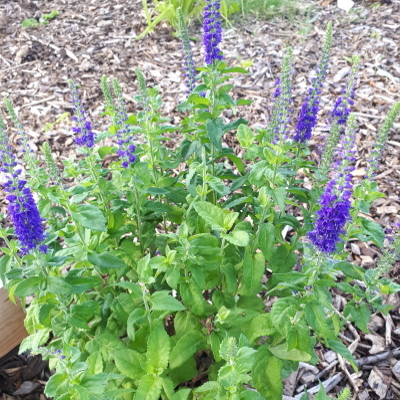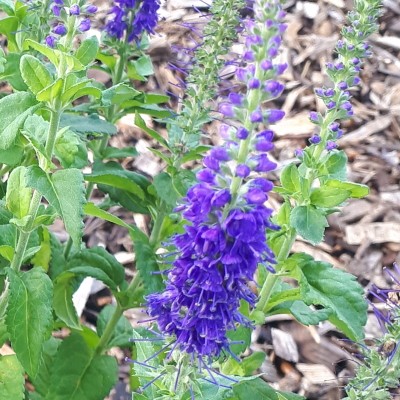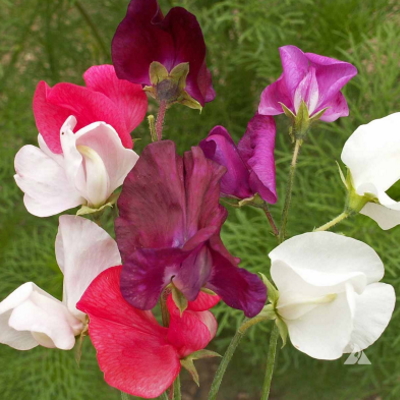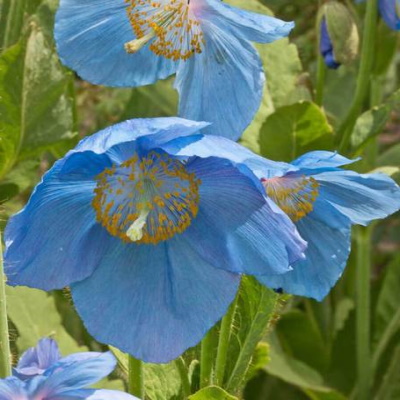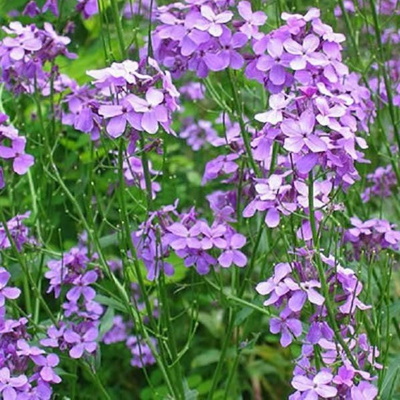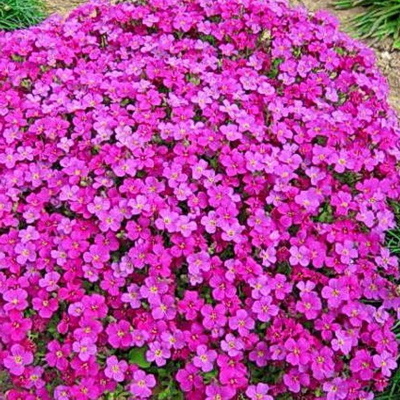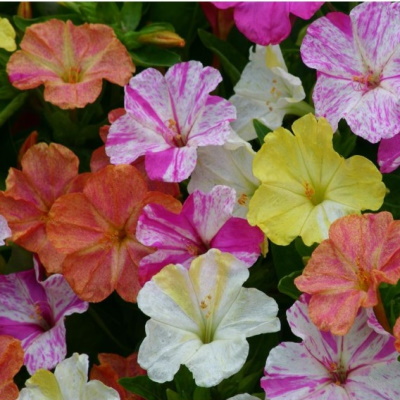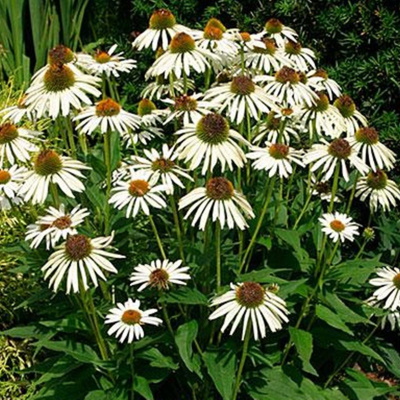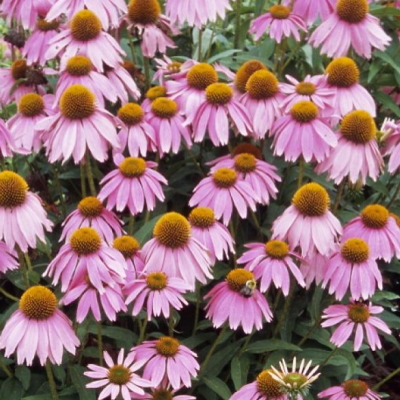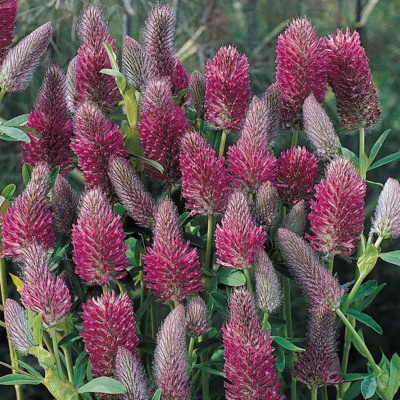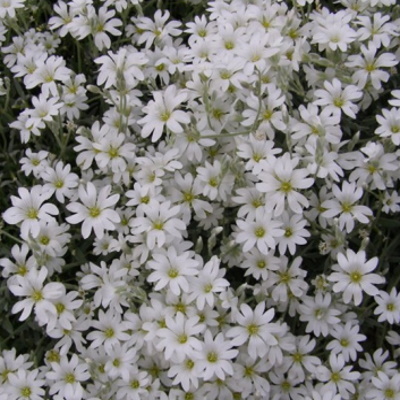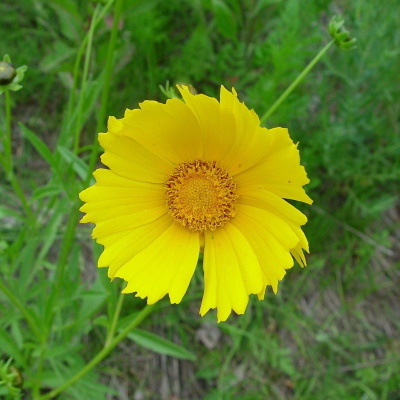Your delivery will be free if your order is $25.00 or more
-
Out of stock
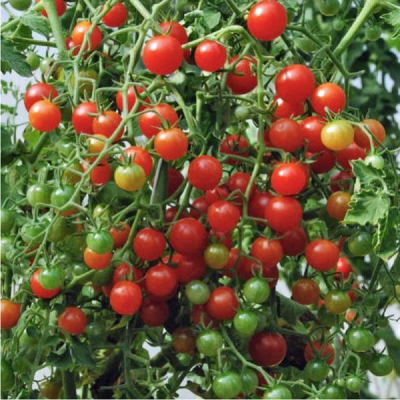 Red Currant plants produce copious quantities of small 1 cm, deep red tomatoes that are exceptionally sweet and packed with flavour. They typically require around 75 days to reach maturity, and make a good choice for containers and hanging baskets, though they are indeterminate growers. Currant tomatoes are native of Peru and Brazil. It was illustrated by Louis Feuille in 1725 Perfect for snacking tomatoes directly from the garden. Great for summer salads. Fruits from early summer until fall frost. Each plant produces 1000's of tiny tomatoes. Best for hanging baskets.
Red Currant plants produce copious quantities of small 1 cm, deep red tomatoes that are exceptionally sweet and packed with flavour. They typically require around 75 days to reach maturity, and make a good choice for containers and hanging baskets, though they are indeterminate growers. Currant tomatoes are native of Peru and Brazil. It was illustrated by Louis Feuille in 1725 Perfect for snacking tomatoes directly from the garden. Great for summer salads. Fruits from early summer until fall frost. Each plant produces 1000's of tiny tomatoes. Best for hanging baskets. -
Out of stock
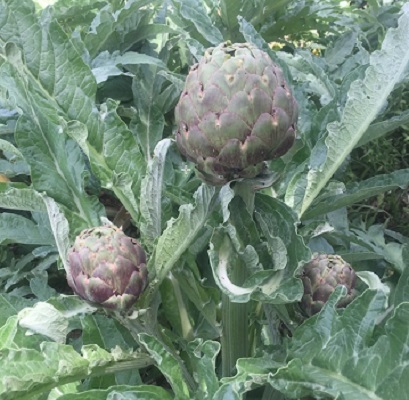
 Start seed indoors in a soil-less mix 8-12 weeks before the last frost date in your area. Sow the seed 6 mm (1/4″) deep and germinate at 21-26 C (70-80 F). When seedlings are 2.5-5 cm (1-2″) high transplant to individual 10 cm (4″) pots and grow on at 15-21 C. Harden off and transplant to the garden after the threat of frost has passed. Artichoke does best in full sun with a deep, organic, fertile soil. Space plants 60-90 cm (24-36″) apart in the row with rows 1.75 m (6′) apart. Keep plants evenly watered and mulch the soil to help preserve soil moisture and keep the soil from becoming too warm in summer. If the soil does become too warm, it can trigger a summer dormant period. Start with a thin layer of mulch and build it up to 10 cm (4″) thick as the plants grow.
Start seed indoors in a soil-less mix 8-12 weeks before the last frost date in your area. Sow the seed 6 mm (1/4″) deep and germinate at 21-26 C (70-80 F). When seedlings are 2.5-5 cm (1-2″) high transplant to individual 10 cm (4″) pots and grow on at 15-21 C. Harden off and transplant to the garden after the threat of frost has passed. Artichoke does best in full sun with a deep, organic, fertile soil. Space plants 60-90 cm (24-36″) apart in the row with rows 1.75 m (6′) apart. Keep plants evenly watered and mulch the soil to help preserve soil moisture and keep the soil from becoming too warm in summer. If the soil does become too warm, it can trigger a summer dormant period. Start with a thin layer of mulch and build it up to 10 cm (4″) thick as the plants grow. -
-
Out of stock
 This delightful Japanese Catmint has many merits. Both the foliage and the flowers are fragrant. It blooms the first year from seed, unlike most perennials. It is upright and nicely branched, rather than sprawling. Make it a centerpiece of your containers and sunny-to-partly-shaded garden areas! Panther Dark Blue walked off with the Bronze Medal at Holland's prestigious Plantarium competition in 2015. The attractive little plant is much more compact than other catmint species, standing just 20 cm high and 25 cm wide. The foliage is bright green, glossy, and toothed, releasing a strong, heavenly fragrance from spring through fall. Profuse bloomer! Medium to dark blue, these tubular flowers reach up to 5 cm long, held in nice clusters on the top of the plant. The blossoms are fragrant, and they begin in early summer and go right through into early fall. You'll be amazed by the flower power of this petite plant.
This delightful Japanese Catmint has many merits. Both the foliage and the flowers are fragrant. It blooms the first year from seed, unlike most perennials. It is upright and nicely branched, rather than sprawling. Make it a centerpiece of your containers and sunny-to-partly-shaded garden areas! Panther Dark Blue walked off with the Bronze Medal at Holland's prestigious Plantarium competition in 2015. The attractive little plant is much more compact than other catmint species, standing just 20 cm high and 25 cm wide. The foliage is bright green, glossy, and toothed, releasing a strong, heavenly fragrance from spring through fall. Profuse bloomer! Medium to dark blue, these tubular flowers reach up to 5 cm long, held in nice clusters on the top of the plant. The blossoms are fragrant, and they begin in early summer and go right through into early fall. You'll be amazed by the flower power of this petite plant. -
Out of stock
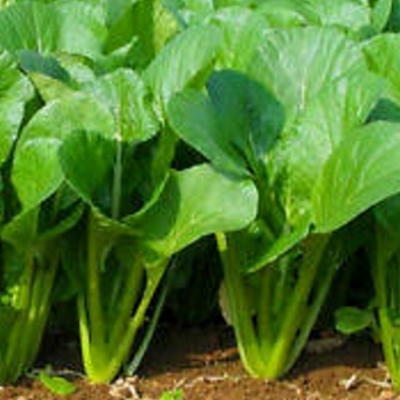
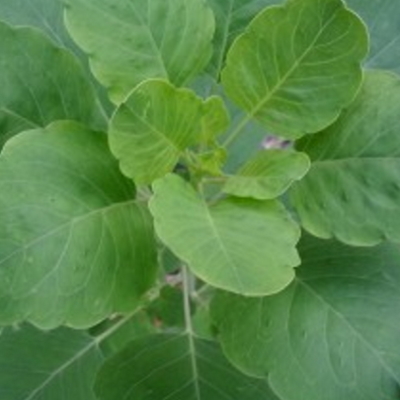
Ethiopian Kale matures in 40 days. Technically, a Mustard, Ethiopian Kale is an unusual leafy green. The hearty leaves have a very complex flavor with overtones of spice and garlic. Great for picking at the baby size in under 3 weeks, or waiting for fully grown leaves. Ethiopian Kale works great makes delicious salad mix, standalone raw, or lightly cooked. An extra cold-tolerant and drought-resistant crop. If you're going to try only one new green this year, Ethiopian Kale should be your first choice.
-
Out of stock
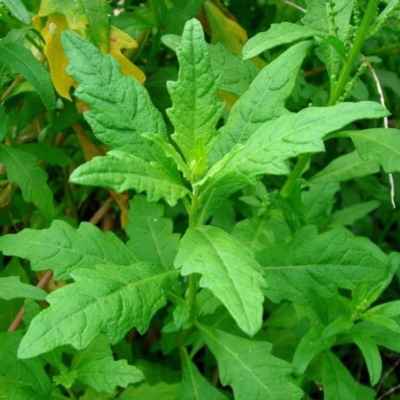
This annual Mexican herb has a pungent aroma, spear-shaped, deeply toothed leaves, and green flowers. It is also known as Wormseed, American Wormseed, Mexican Tea or Herba Sancti Mariae. Epazote's (eh-pah-ZOH-teh) fragrance is strong and pungent. It has been compared to citrus, petroleum, savory, mint, or camphor. It smells pretty strong, but we have found that it does add a wonderful depth of flavor to a pot of beans! With its strong taste and aroma, not everyone takes to it right away, but used as a spice, it adds a wonderful rustic layer of flavor to many Mexican and Latin American dishes, giving them an extra dimension of flavor that just can’t be replicated with any other herb – very similar to the “umami” flavors of fermented Asian ingredients. Epazote leaves are used for their pungent flavor and aroma to season soup, corn, beans, and shellfish in Mexico. It is used in beans to prevent flatulence. It is also brewed for "Jesuit Tea" but the herb's main use is to expel intestinal worms from humans and animals. Oil of chenopodium is derived from this plan.
-
Out of stock
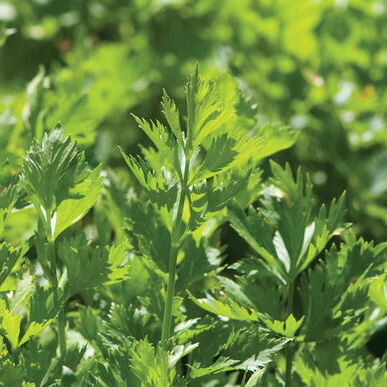
Leafy herb with bold celery flavor. Easier to grow than standard celery. A versatile ingredient for salads, soups, stews, and vegetable medleys. More intense flavour (both fresh and dried) than garden celery.
-
Out of stock

A stellar bulbing Florence fennel with an excellent sweet anise-like flavor that mellows with cooking. Selma Fino is usually the sweetest tasting. Takes about 80 days to form full-sized bulbs, however, it can be harvested sooner at a smaller size. Very white bulbs are fairly uniform and won’t prematurely bolt if planted in spring. Tops can be used as a fresh herb, adding a mellow fennel flavor to dishes or salads. Unique compared to other bulb type fennel, some plants have a perennial nature. The flowers are highly attractive to bees and other beneficial insects. Fennel leaves, florets, and seeds can be used for culinary purposes as an herb.
-
Out of stock
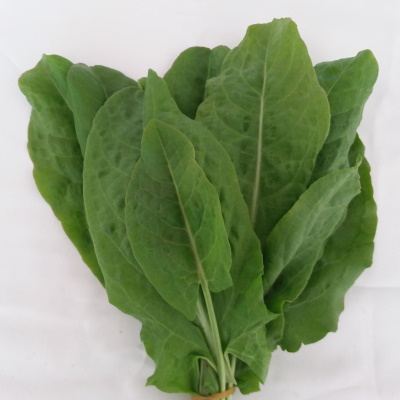
The herbal lemony flavor of sorrel makes a great addition to salads, sauces, or soups. A famed companion to fish. Will produce the most tender leaves in cool weather. Sow in spring or fall. Once established, can be propagated by root division. Hardy in zone 4-8. Perennial.
-
 Bridal Silk is a Shirley poppy. Shirley poppies thrive in cool temperatures and must be sown when the soil is still cold. 'Bridal Silk' has glistening pure-white chalice-shaped flowers in glorious bloom during early summer, new flowers opening every morning as the old flowers shed their petals. These plants prefer evenly moist soil but can tolerate drought. About an inch of water per week is more than sufficient once they are established. Plant height 45-60 cm.
Bridal Silk is a Shirley poppy. Shirley poppies thrive in cool temperatures and must be sown when the soil is still cold. 'Bridal Silk' has glistening pure-white chalice-shaped flowers in glorious bloom during early summer, new flowers opening every morning as the old flowers shed their petals. These plants prefer evenly moist soil but can tolerate drought. About an inch of water per week is more than sufficient once they are established. Plant height 45-60 cm. -
-
 Double flowers with a silky appearance in shades of pink, white, red, rose, and salmon on 80 cm stems. Strong plants perform well in the heat and drought even though they are considered a cool-season plant. Sow Shirley Double Mix poppy seeds at two-week intervals from late February to mid-April for flowers from mid- to late summer. These poppies will self-sow, and they look spectacular in mass plantings. The flowers have a very delicate appearance, but the plants are actually quite tough. For cut flowers use a candle to sear the stem ends to help them last several days. Rely on Shirley Double to self-sow without becoming weedy.
Double flowers with a silky appearance in shades of pink, white, red, rose, and salmon on 80 cm stems. Strong plants perform well in the heat and drought even though they are considered a cool-season plant. Sow Shirley Double Mix poppy seeds at two-week intervals from late February to mid-April for flowers from mid- to late summer. These poppies will self-sow, and they look spectacular in mass plantings. The flowers have a very delicate appearance, but the plants are actually quite tough. For cut flowers use a candle to sear the stem ends to help them last several days. Rely on Shirley Double to self-sow without becoming weedy. -
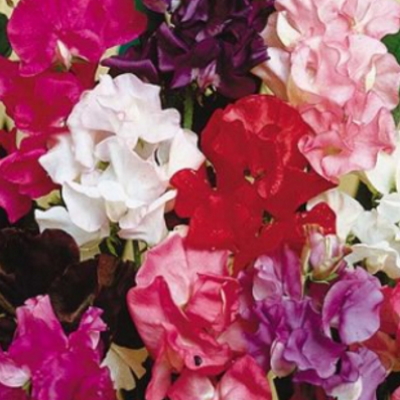 One of the best extra large flowers in a blend of deep rose, salmon, cream, pink, scarlet, white, mid blue, and crimson. Sow Mammoth Blend sweet pea seeds for the earliest sweet peas to bloom from late spring to early summer. Direct sow sweet pea seeds at three-week intervals for an extended bloom period. They have very large flowers on long stems, so they're a great cut flower. Their scent is more subdued than other sweet pea varieties.
One of the best extra large flowers in a blend of deep rose, salmon, cream, pink, scarlet, white, mid blue, and crimson. Sow Mammoth Blend sweet pea seeds for the earliest sweet peas to bloom from late spring to early summer. Direct sow sweet pea seeds at three-week intervals for an extended bloom period. They have very large flowers on long stems, so they're a great cut flower. Their scent is more subdued than other sweet pea varieties. -
 Use seeds, leaves, and flowers. Bright, sunny colors: yellow, pink, red, and orange. The edible flowers are popular for salads and as a garnish; the peppery leaves are also very flavorful. A colourful garden favorite. Flowers all summer long. Keep watered during dry weather, and do not fertilize. Excellent in window boxes, hanging baskets, or raised beds. Suitable for xeriscaping
Use seeds, leaves, and flowers. Bright, sunny colors: yellow, pink, red, and orange. The edible flowers are popular for salads and as a garnish; the peppery leaves are also very flavorful. A colourful garden favorite. Flowers all summer long. Keep watered during dry weather, and do not fertilize. Excellent in window boxes, hanging baskets, or raised beds. Suitable for xeriscaping -
Out of stock
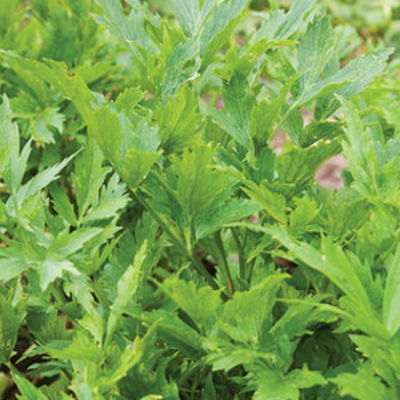
Specialty culinary herb. Young leaves taste like celery and are used in spring salads and with potato, rice, and poultry dishes. Roots and young stems are also edible. Young stems can be cut, peeled, and used in salads. Stems are smooth, hollow, and thick. Attracts Beneficial Insects: If allowed to flower, provides pollen and nectar for beneficial insects such as bees, hoverflies, lacewing larva, lady beetles, parasitic wasps, and tachinid flies.
-
Out of stock
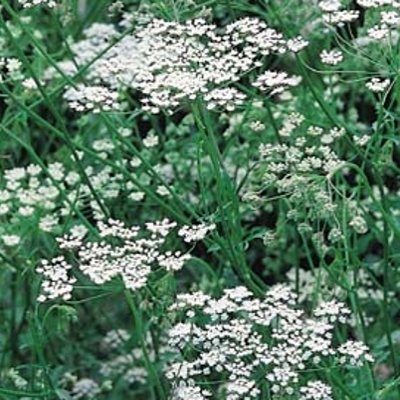 Anise is always grown in our gardens, they not only have attractive foliage but their seeds are harvested in our kitchens for soups, spreads, salad dressings, cakes, and cookies. Seeds and leaves carry a sweet, licorice-like flavor, make a comforting tea, or a tasty breath freshener. Many use Anise as a treatment for sore throats, indigestion, and flatulence. Anise essential oil is used to flavor licorice candy. Try the feathery leaves fresh in salads and soups. Umbrella-like clusters of tiny white flowers bloom in July, attract butterflies, bees, and beneficial insects. Seed heads attract birds.
Anise is always grown in our gardens, they not only have attractive foliage but their seeds are harvested in our kitchens for soups, spreads, salad dressings, cakes, and cookies. Seeds and leaves carry a sweet, licorice-like flavor, make a comforting tea, or a tasty breath freshener. Many use Anise as a treatment for sore throats, indigestion, and flatulence. Anise essential oil is used to flavor licorice candy. Try the feathery leaves fresh in salads and soups. Umbrella-like clusters of tiny white flowers bloom in July, attract butterflies, bees, and beneficial insects. Seed heads attract birds. -
Out of stock
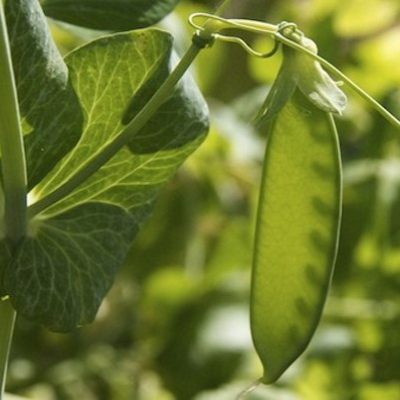 Certified Organic. Sweet peas inside big, sweet pods combine for a delicious flavor treat. High yields of large, medium-green, flat pods follow white-flowered vines. High resistance to Fusarium wilt race 1, pea enation mosaic virus, and powdery mildew. Eat fresh, add to salads or use in a stir fry.
Certified Organic. Sweet peas inside big, sweet pods combine for a delicious flavor treat. High yields of large, medium-green, flat pods follow white-flowered vines. High resistance to Fusarium wilt race 1, pea enation mosaic virus, and powdery mildew. Eat fresh, add to salads or use in a stir fry. -
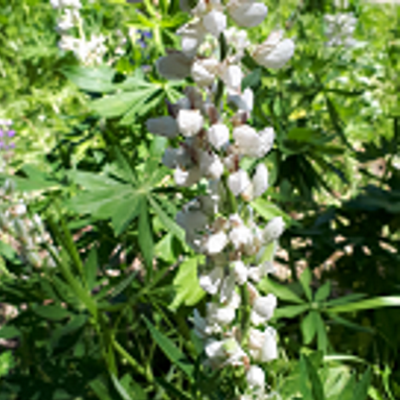
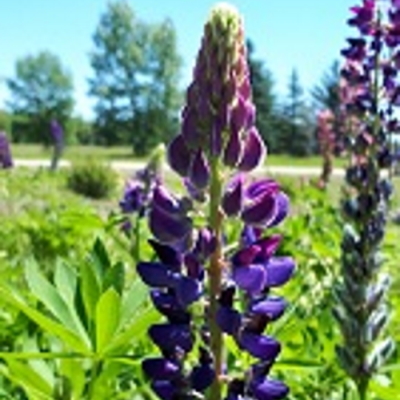 Stunning, brightly-colored spikes create a strong feature in the early summer garden. Its pea-like flowers grow in dense spires. Scatter through cottage or wildflower gardens or mass plant in the border. Purple, deep blue, red, pink, yellow, cream, and white. Lupins prefer a full sun position but will also grow well in semi-shade, they do not grow well in full shade. They grow well in a wide variety of soil conditions although chalky and/or waterlogged soil will be a problem if not improved before planting. If the ground is clay, lots of compost dug into the planting area will greatly increase their chances of surviving winters. Once your Lupins start to flower create new plants if you want more of a certain colour, gently separate the little offset at the base of a mature plant and replant it.
Stunning, brightly-colored spikes create a strong feature in the early summer garden. Its pea-like flowers grow in dense spires. Scatter through cottage or wildflower gardens or mass plant in the border. Purple, deep blue, red, pink, yellow, cream, and white. Lupins prefer a full sun position but will also grow well in semi-shade, they do not grow well in full shade. They grow well in a wide variety of soil conditions although chalky and/or waterlogged soil will be a problem if not improved before planting. If the ground is clay, lots of compost dug into the planting area will greatly increase their chances of surviving winters. Once your Lupins start to flower create new plants if you want more of a certain colour, gently separate the little offset at the base of a mature plant and replant it. -
Out of stock
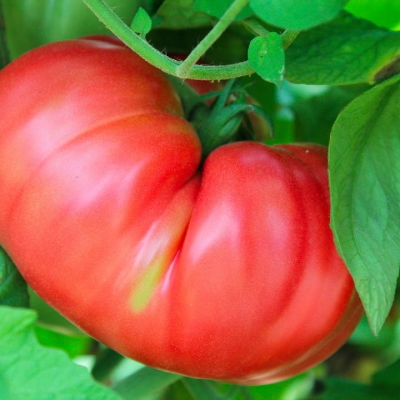
Dating back to 1885, this heirloom wins most flavour contests. Brandywine, which dates back to 1885, is the heirloom tomato standard. The large, beefsteak-shaped fruits grow on unusually upright, potato-leaved plants. The fruits set one or two per cluster and ripen late-and are worth the wait. Brandywine's qualities really shine when it develops an incredibly fine, sweet flavor. It a massive tomato and the vines are massive too. Tall sturdy stalks are necessary for these plants.
-
 Calendula are actually short-lived tender perennials that are grown as annuals in Canada. Large 10 cm blooms in a nice range of colours -apricot, cream, orange and yellow. They flower generously through the summer on well-branched plants that grow to 45 cm in height. Calendula is also known as the pot marigold and grows nicely in containers! One of the easiest flowers to grow. Try using petals in salads. Pick when in full bloom to dry for homemade teas, soaps, and calendula cream. Calendula is a versatile plant that can be used for it's culinary and healing properties and for long-lasting cut flowers.
Calendula are actually short-lived tender perennials that are grown as annuals in Canada. Large 10 cm blooms in a nice range of colours -apricot, cream, orange and yellow. They flower generously through the summer on well-branched plants that grow to 45 cm in height. Calendula is also known as the pot marigold and grows nicely in containers! One of the easiest flowers to grow. Try using petals in salads. Pick when in full bloom to dry for homemade teas, soaps, and calendula cream. Calendula is a versatile plant that can be used for it's culinary and healing properties and for long-lasting cut flowers. -
Out of stock
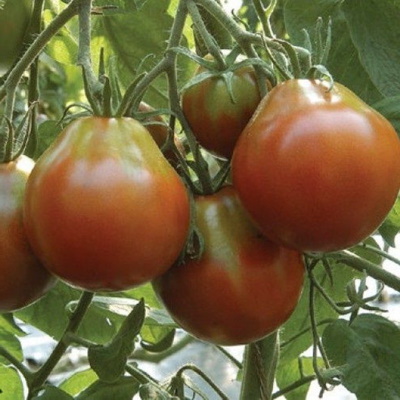
Late, high-yielding heirloom variety for open ground and greenhouses. Indeterminate tomato, the plant grows more than 200 cm (80 in.) high. Truly a unique black Russian tomato of Siberian origin. (Similar to Japanese Black Trifele.) Black Pear organic heirloom tomato seeds produce big, indeterminate, potato-leaf plants that yield plentiful crops of 75-80 gram fruits on dark, mahogany-brown tomatoes with dark green shoulders. Fruits are shaped like miniature pears and are loaded with excellent, complex, sweet, well-balanced flavors. These are not only very decorative but a perfect choice for cutting up into salads or used in a tomato sauce. A good, dependable, cooler climate variety. Disease resistant.
-
 This prolific, trailing plant will travel great lengths. Train vertically by tying it to something. Use it in a hanging planter for dramatic effect, wrap it around a fence or archway, or let it tumble over a retaining wall. Tall Single Mix nasturtium seeds provide a wondrous assortment of lively classic nasturtium colours. Plant in full sun or partial shade - in shade it will produce even longer vines and larger leaves. This variety is excellent for filling in empty spots in the garden. The flowers are edible and the plants are drought tolerant so they're suitable for xeriscaping. Vines will grow as much as 3m (10').
This prolific, trailing plant will travel great lengths. Train vertically by tying it to something. Use it in a hanging planter for dramatic effect, wrap it around a fence or archway, or let it tumble over a retaining wall. Tall Single Mix nasturtium seeds provide a wondrous assortment of lively classic nasturtium colours. Plant in full sun or partial shade - in shade it will produce even longer vines and larger leaves. This variety is excellent for filling in empty spots in the garden. The flowers are edible and the plants are drought tolerant so they're suitable for xeriscaping. Vines will grow as much as 3m (10'). -
Out of stock
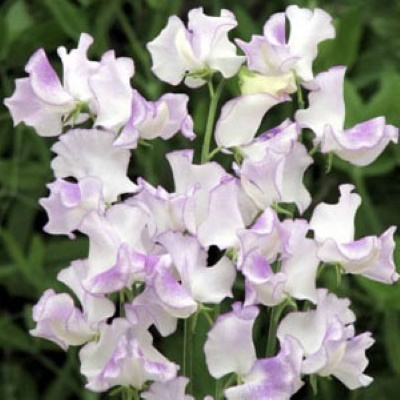 Plant High Scent sweet pea seeds for incredibly luxurious floral fragrance. This variety has large, pure white flowers that blush at the edges. The vines are tall at 120cm (48"), and the stems are long, making them superb and elegant cut flowers. "High Scent" is no exaggeration - these are the sweet peas to grow for their intense perfume. Try them on a trellis or as a screen to break up garden spaces. It's easiest just to direct sow the seeds in early spring and erect a trellis or support once the seedlings are 15cm (6") tall. Keep the vines clear of spent flowers to prolong the bloom period.
Plant High Scent sweet pea seeds for incredibly luxurious floral fragrance. This variety has large, pure white flowers that blush at the edges. The vines are tall at 120cm (48"), and the stems are long, making them superb and elegant cut flowers. "High Scent" is no exaggeration - these are the sweet peas to grow for their intense perfume. Try them on a trellis or as a screen to break up garden spaces. It's easiest just to direct sow the seeds in early spring and erect a trellis or support once the seedlings are 15cm (6") tall. Keep the vines clear of spent flowers to prolong the bloom period. -
Out of stock
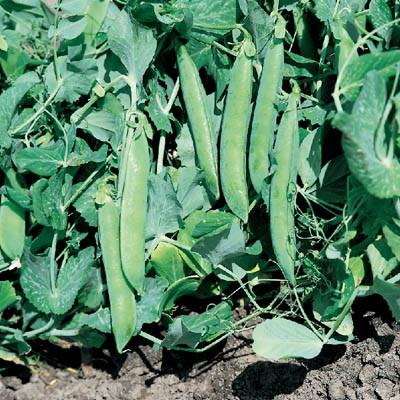 Green Arrow shelling pea seeds. These are excellent for fresh eating, freezing, canning, or cooking. Born in pairs at the top of the short bush are heavy yields of dark green pods to 11cm (4.5") containing 9 to 11 peas each. The peas themselves are tender and sweet and the 70cm (28") plants are resistant to enation, Fusarium wilt, root rot, Leaf Curl virus (LCV), and downy mildew, so they are ideal for coastal gardens. Green Arrow shelling pea seeds were first bred in England as a main season pea crop, and are listed in some UK sources as Green Shaft.
Green Arrow shelling pea seeds. These are excellent for fresh eating, freezing, canning, or cooking. Born in pairs at the top of the short bush are heavy yields of dark green pods to 11cm (4.5") containing 9 to 11 peas each. The peas themselves are tender and sweet and the 70cm (28") plants are resistant to enation, Fusarium wilt, root rot, Leaf Curl virus (LCV), and downy mildew, so they are ideal for coastal gardens. Green Arrow shelling pea seeds were first bred in England as a main season pea crop, and are listed in some UK sources as Green Shaft. -
Out of stock
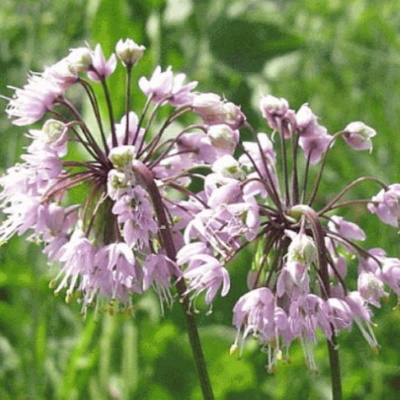 This perennial wildflower attracts butterflies with its tiny, pink, bell-shaped blossoms that form a globe at the top of the stem. Not only are the flowers pretty, the onion-flavored leaves and flowers are also edible, and may also be used in salads or as a garnish.
This perennial wildflower attracts butterflies with its tiny, pink, bell-shaped blossoms that form a globe at the top of the stem. Not only are the flowers pretty, the onion-flavored leaves and flowers are also edible, and may also be used in salads or as a garnish. -
-
Out of stock
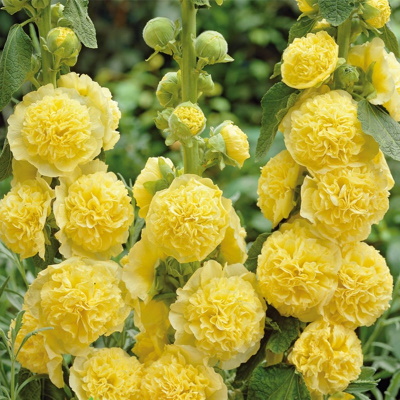 Perennial, grows 150-250cm tall. Large, yellow, double flowers collected in giant inflorescences. Blooms in the second year from July. Use for group plantings, borders, and cutting.
Perennial, grows 150-250cm tall. Large, yellow, double flowers collected in giant inflorescences. Blooms in the second year from July. Use for group plantings, borders, and cutting. -
-
Out of stock
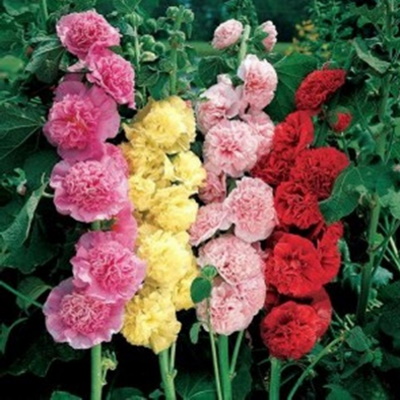 Beautiful perennial flowering plant height 1.5-2.5 meters The flowers are double, large, diameter 8-12 cm, pink, yellow, light pink, and red colour. Grown by sowing seeds in open ground in May-June or September. Blooms second year, starting in July.
Beautiful perennial flowering plant height 1.5-2.5 meters The flowers are double, large, diameter 8-12 cm, pink, yellow, light pink, and red colour. Grown by sowing seeds in open ground in May-June or September. Blooms second year, starting in July. -
-
-
-
-
-
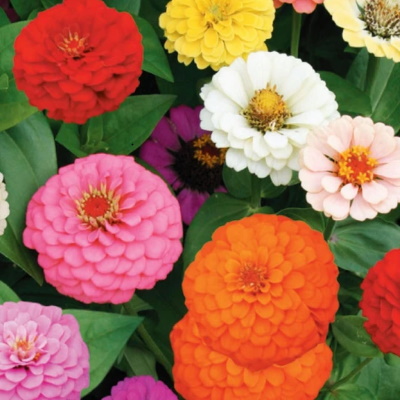 Zinnias add bold, vibrant color to gardens. Cut & Come Again Mix has long-stemmed flowers 6.5 cm across in a blend of pink, bright scarlet, yellow, salmon, white and more. The more you cut, the more they bloom, and they keep blooming from midsummer until frost. Heat-loving and very easy to grow. Great for cutting as well as in the garden.
Zinnias add bold, vibrant color to gardens. Cut & Come Again Mix has long-stemmed flowers 6.5 cm across in a blend of pink, bright scarlet, yellow, salmon, white and more. The more you cut, the more they bloom, and they keep blooming from midsummer until frost. Heat-loving and very easy to grow. Great for cutting as well as in the garden. -
